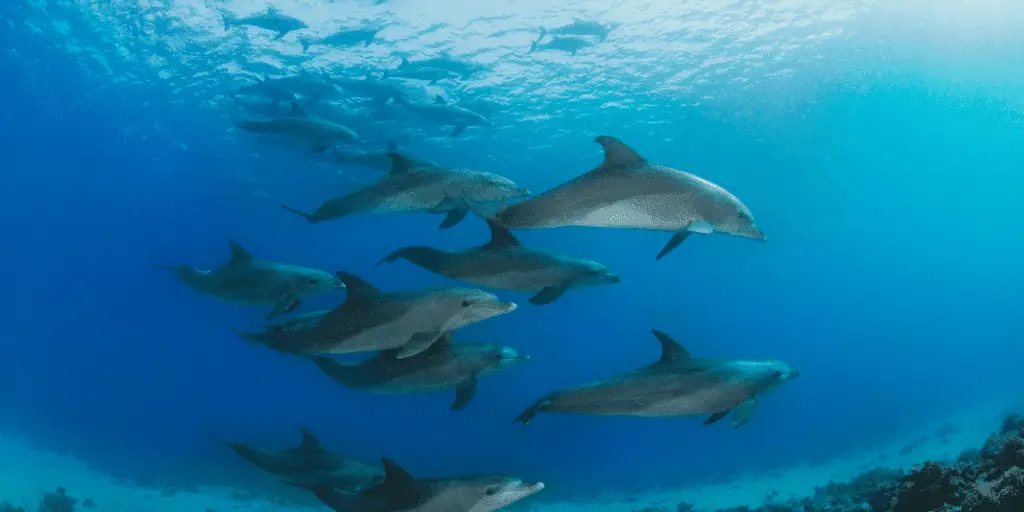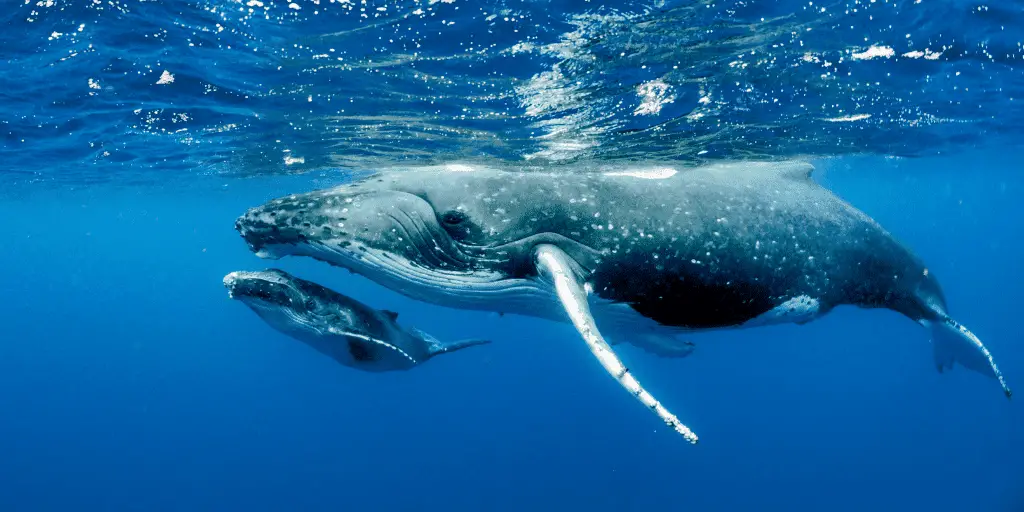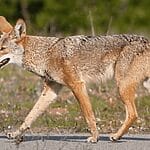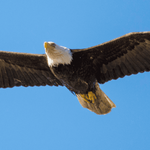Unlock the secrets of the animal kingdom’s most remarkable minds in our exploration of the creatures with the best memory. Discover why an elephant never forgets, how dolphins recall friends after years apart, and the way dogs remember more than just tricks.
This article unveils the fascinating cognitive feats that aid survival, social bonds, and even emotional intelligence, offering a glimpse into the extraordinary mental capabilities of our planet’s wildlife.
Key Takeaways:
- Dolphins possess an extraordinary memory for social interactions and communication, with the ability to remember individual “signature whistles” akin to names, even after years of separation, and pass down hunting techniques through generations.
- Elephants demonstrate remarkable spatial memory, recalling the locations of water sources over vast distances, and exhibit profound emotional memory, mourning deceased herd members and recognizing individuals after long periods.
- Chimpanzees have outperformed humans in certain memory tests, showcasing an uncanny ability to remember numerical sequences and the locations of hidden items, and they use memory in tool use and social learning.
- Dogs display impressive associative memory in training, remembering commands and their associated behaviors, and have strong emotional memory influencing social behaviors, with examples of dogs remembering their owners after long separations.
- Parrots have a neurological structure that supports advanced learning and memory, capable of learning a vast repertoire of sounds and words for use in context, and demonstrate emotional intelligence through long-lasting bonds and signs of grief.
List of Animal With Best Memory
Elephants have the best memory, excelling in spatial recall and social recognition, crucial for survival and complex social dynamics.
| Animal | Memory Trait | Notable Ability |
| Dolphins | Social & Emotional Memory | Recognize individual “signature whistles” years later; pass down hunting techniques. |
| Elephants | Spatial Memory | Remember locations of water sources across vast distances; mourn deceased herd members. |
| Chimpanzees | Short-Term Memory | Outperform humans in certain memory tests; use and remember tools and symbols. |
| Dogs | Associative Memory | Remember commands and people; sense and respond to human emotions. |
| Parrots | Vocal Mimicry Memory | Imitate sounds and words, use them in context; remember individuals. |
| Whales | Navigational Memory | Navigate and return to specific migratory and feeding grounds; pass down songs and behaviors. |
| Ravens | Spatial & Planning Memory | Cache food and remember locations; solve complex problems indicating planning for the future. |
| Monkeys | Spatial & Social Memory | Navigate forests and remember food locations; recognize social hierarchy within groups. |
| Horses | Emotional & Command Memory | Respond to complex commands; recognize and remember individuals and emotional contexts. |
| Clark’s Nutcracker | Spatial Memory | Remember locations of thousands of cached seeds crucial for survival and ecosystem regeneration. |
Dolphins

Dolphins are often celebrated for their acrobatics and playful behavior, but beneath the surface, these marine mammals possess an extraordinary memory, particularly when it comes to social interactions and communication. Their sophisticated social memory allows them to maintain complex relationships within their pods.
Each dolphin has a unique “signature whistle,” akin to a name, which not only identifies them but also strengthens social bonds. Remarkably, dolphins can remember these whistles of their pod members and even recognize them after years of separation, a testament to their long-term memory capacity.
Scientific studies have illuminated the depth of dolphins’ memory, revealing their ability to remember human friends and trainers over extended periods.
This impressive recall extends to their survival tactics as well. Dolphins remember the locations of bountiful fishing grounds, and they pass down cooperative hunting techniques through generations, ensuring their young learn the wisdom of their forebears.
Beyond the practical, memory in dolphins also appears to be intertwined with emotional intelligence. Observations suggest that they experience complex emotions, exhibiting behaviors that resemble mourning for lost pod members, expressing joy during play, and potentially holding grudges against those who have wronged them.
This emotional depth, supported by their memory capabilities, paints dolphins not just as intelligent creatures, but as sentient beings with rich social and emotional lives.
Through the lens of cognitive science, these narratives from research and observations contribute to a more profound understanding of dolphins as more than just animals—they are individuals with histories, relationships, and possibly even stories to tell.
Elephants
Imagine having to remember the location of every water source in an area larger than some cities. Elephants do just that. They recall the locations of numerous waterholes and can navigate to them over great distances and after many years.
This remarkable spatial memory is crucial for their survival, especially during droughts when water is scarce. Studies have shown that older matriarchs, who have the most experience, often lead their herds to these life-saving water sources, following routes they may have last traveled decades ago.
Social Bonds and Recognition
Elephants are social creatures with complex herd dynamics. They form deep bonds with their family members and can recognize these individuals after long periods of separation.
Research has documented elephants greeting each other with what can only be described as joy after being apart. This recognition extends beyond their immediate social circles, as they can also remember and distinguish between friendly humans and those who pose a threat, even after many years.
Mourning and Emotional Memory
Perhaps one of the most touching displays of elephants’ memory is their behavior towards deceased herd members. They are known to mourn their dead, often touching and smelling the bones of their fallen companions, a behavior that suggests a deep emotional memory. This mourning can last for days and is a poignant reminder of the depth of their social connections.
Biological Underpinnings
The elephant brain is not only one of the largest in the animal kingdom but also incredibly complex, with a high number of neurons and synapses that facilitate their cognitive functions. The temporal lobe, associated with memory, is particularly developed in elephants, which may explain their capacity for recall.
The hippocampus, a brain region involved in processing memories, is also well developed, supporting their navigational and social memory capabilities.
Through their extraordinary memory, elephants demonstrate not just cognitive prowess but also the profound emotional connections that are vital to their social structure and overall survival.
Chimpanzees

Cognitive Experiments and Memory Tests
In the laboratory, chimpanzees have been put to the test and have shown that they can outshine humans in certain memory challenges.
For instance, in tests involving numerical sequences, these primates demonstrate an uncanny ability to remember which numbers appeared where, and in what order, after only a brief glance.
It’s a bit like they have a photographic memory for numbers. Similarly, when it comes to recalling the locations of hidden items, chimpanzees can quickly and accurately retrieve them, showcasing a level of short-term memory that leaves many humans in the dust.
Memory in Tool Use and Social Learning
But it’s not just in artificial tests that chimpanzees excel. Their memory plays a pivotal role in their survival and social interactions. They use tools with precision, remembering which ones work best for which tasks, like using sticks to fish for termites or rocks to crack open nuts.
This knowledge isn’t just instinctual; it’s learned and remembered. In social settings, they learn from one another, passing down knowledge generation to generation, a clear sign of memory at work.
Communication and Symbol Use
Chimpanzees also have the ability to learn sign language and symbols, using them to communicate with humans and each other. This requires not only understanding and remembering the signs or symbols but also the context in which they’re used. It’s a complex process that hinges on their remarkable memory capabilities.
Implications for Understanding Memory Evolution
The parallels between chimpanzee memory and human memory systems are striking and provide valuable insights into the evolution of memory and intelligence. By studying these animals, scientists can piece together how memory might have developed in our own ancestors.
Anecdotes of Chimpanzee Memory
Beyond the data and experiments, there are countless stories that bring the memory prowess of chimpanzees to life. Some have navigated vast forest territories with ease, while others have recognized and warmly greeted human friends after years of separation.
These anecdotes not only underscore the scientific findings but also give us a glimpse into the emotional depth and intelligence of these remarkable creatures.
Dogs

Associative Memory in Training
When it comes to training, dogs exhibit an impressive associative memory. They can learn to connect a specific command with a behavior and the subsequent reward or consequence.
This type of memory is the cornerstone of obedience training and trick learning. For instance, a study published in the journal “Animal Cognition” found that dogs could remember over 200 objects by name, showcasing their ability to form long-lasting associations.
Emotional Memory and Social Behavior
Dogs also have a strong emotional memory, which influences their social behaviors. They remember not just the people who treat them well or poorly, but also the emotional context of past experiences. This emotional recall helps them to develop deep bonds with their owners and can explain why dogs often seem to have an innate sense of human emotions.
Problem-Solving Skills
Memory plays a pivotal role in dogs’ problem-solving abilities. They can remember the location of hidden toys or treats and navigate obstacles with ease. This cognitive skill is not just for show; it’s a critical part of how dogs interact with their environment and can be especially important for working dogs that need to make quick decisions.
Utility in Professional Contexts
In professional contexts, dogs’ memory is nothing short of remarkable. Service dogs, for example, remember complex commands and tasks to assist their handlers with disabilities. Therapy dogs recall the preferences and needs of the individuals they comfort. In law enforcement, K9 units rely on their memory to track scents and recall training in high-pressure situations.
Long-Term Memory Examples
Real-life examples of dogs’ long-term memory are both scientific and heartwarming. There are countless stories of dogs remembering their owners after years of separation, and tales of lost dogs navigating back to their homes over incredible distances.
These anecdotes are supported by research, such as a study in the journal “Behavioural Processes,” which indicates that dogs can remember their owner’s actions even after long periods.
Through a blend of scientific evidence and touching stories, it’s clear that dogs possess a deep and multifaceted memory. Whether it’s following an intricate series of commands, sensing the mood of their human companions, or navigating their way home after a long journey, dogs consistently demonstrate the profound capabilities of their memory.
Parrots
Neurological Basis of Parrots’ Cognitive Skills
The brains of parrots are structured in a way that supports advanced learning and memory functions. Unlike many other birds, parrots have a large forebrain responsible for cognitive processing.
This area of the brain is densely packed with neurons, even more so than in some mammals. This neurological complexity allows parrots to perform tasks that require understanding and memory, such as solving puzzles and using words in context.
Memory for Vocalizations and Contextual Use of Words
Parrots can learn a vast repertoire of sounds and words, which they can then use in context. Studies have shown that some species can associate words with their meanings and apply them in appropriate situations, demonstrating not just memory but also a level of comprehension.
Their vocal memory is so precise that they can imitate the voice of their human caregivers and even the specific sounds of electronic devices.
Recognition of Individuals and Locations
These birds are also adept at recognizing individuals, both within their own species and across species boundaries. They can remember their human caregivers, often greeting them with specific calls.
Moreover, parrots have shown the ability to navigate their environment with precision, recalling the locations of food sources and their nests over vast distances.
Emotional Aspects of Parrots’ Memory
The emotional intelligence of parrots is closely linked to their memory. They form long-lasting bonds with their mates and can become deeply attached to their human families. The loss of a companion can lead to visible signs of grief, indicating that their memories of individuals are not just cognitive but also emotional.
By exploring these facets of parrots’ memory, it becomes clear that their cognitive skills are not just for survival but also for social interaction and emotional expression, painting a picture of a deeply intelligent and emotionally complex creature.
Whales

Imagine having to travel thousands of miles across open ocean, with no landmarks in sight, and doing so year after year. This is precisely what whales do, relying on their remarkable memory to navigate and remember feeding grounds and migratory routes.
The blue whale and humpback whale, for instance, have been observed returning to the same locations with pinpoint accuracy. This ability to recall routes and destinations is not just about survival; it’s a testament to their extraordinary memory.
Social Memory and Communication
Whales are social creatures, and their memory plays a crucial role in how they interact. They recognize each other’s calls, which are as unique as fingerprints, allowing them to maintain complex social networks within their pods.
This social memory is vital for their cooperation and cohesion as a group, which is essential for their protection and success in the vast and sometimes unforgiving ocean environment.
Scientific Insights into Whales’ Memory
Research into whale behavior and cognition has shed light on just how long-lasting their memories can be. Studies have shown that whales can remember potential threats, such as predators or harmful fishing areas, and avoid them in the future.
This ability to learn from past experiences and apply that knowledge to optimize feeding strategies and other survival tactics is a clear indication of their sophisticated memory capabilities.
Cultural Transmission of Knowledge
Perhaps one of the most fascinating aspects of whale memory is the cultural transmission of knowledge. Whales pass down songs and behaviors from generation to generation, a process that relies heavily on memory. This cultural heritage is not only beautiful to witness but also serves practical purposes, helping young whales learn essential skills for survival in the wild.
Through their impressive memory, whales have mastered the art of living in harmony with the ocean’s rhythms, ensuring their species’ continuity and the health of marine ecosystems. Their memory is not just a tool for survival; it’s a repository of their history and a bridge to their future.
Ravens
Food Caching and Memory
Ravens have a remarkable knack for caching, or hiding, their food to eat at a later time. This behavior isn’t just about stashing away a snack; it requires the bird to remember where it’s hidden its food supplies.
Studies have shown that ravens can recall the locations of their caches for extended periods, demonstrating a memory that’s both durable and precise. This ability is crucial for their survival, especially in harsh environments where food is scarce and remembering the location of a hidden meal can make all the difference.
When it comes to navigating their expansive territories, ravens are masters of the skies. They use their memory to map out vast areas, keeping track of landmarks and topographical cues.
This mental mapping is essential for ravens as they forage for food, avoid predators, and return to their nests. Their impressive spatial memory allows them to traverse long distances with confidence, ensuring they can find their way back to familiar grounds.
Recognizing Individuals
Ravens don’t just remember places; they also remember faces. These birds can recognize individual ravens and even humans, which plays a pivotal role in their social interactions.
Their ability to remember others helps them maintain complex social networks, where knowing who is friend or foe can be critical. This recognition extends to understanding social hierarchies within their groups, allowing them to navigate the intricate dynamics of raven society.
Planning for the Future
Perhaps one of the most striking demonstrations of ravens’ memory is their ability to plan for the future. Experiments have shown that ravens can select and save tools that they will use to obtain food later on, an action that requires foresight and a strong memory. This forward-thinking behavior is a clear indicator of their sophisticated cognitive abilities and sets them apart from many other animal species.
Social Dynamics and Tool Use
The complex social lives of ravens are intertwined with their memory. They use their recollections of past interactions to inform future social decisions, such as forming alliances or avoiding conflicts.
Additionally, ravens have been observed using tools, a skill that necessitates remembering how and when to use objects to achieve a desired outcome. This combination of social understanding and tool use is a testament to the power of their memory and further evidence of their intelligence.
By delving into these aspects of raven behavior, it becomes evident that their memory is not just a singular trait but a multifaceted foundation that supports their survival and social sophistication. Ravens are truly remarkable birds, and their cognitive prowess, particularly their memory, is a subject that continues to fascinate and inspire.
Monkeys

Spatial Memory
Imagine navigating a dense forest, full of twists and turns, without a map or compass. Monkeys do this with ease, thanks to their remarkable spatial memory.
They remember the locations of food sources, water holes, and even the paths they’ve traveled. This ability is not just about survival; it’s also about efficiency. By recalling the most direct routes to resources, monkeys save time and energy, which is crucial in the wild.
Social Memory
Monkeys live in intricate social structures and must recognize the faces and ranks of other members in their groups. This social memory helps maintain hierarchies and avoid conflicts.
For instance, a monkey must remember which individuals it can groom and which ones to steer clear of, based on their social status. This complex social dance is choreographed by their keen memory of past interactions and social cues.
Procedural Memory
When it comes to learning new tasks, monkeys are quick learners. They can solve puzzles and remember sequences, showcasing their procedural memory.
In experimental studies, monkeys have demonstrated the ability to use tools and solve problems that require recalling a series of steps. This type of memory is not just about rote learning; it’s about understanding and applying knowledge to manipulate their environment to their advantage.
The cognitive abilities of monkeys offer a window into the evolution of memory and cognition. Their memory systems share similarities with humans, providing insights into our own cognitive processes.
Field studies have revealed monkeys using their memory to forage efficiently and avoid predators, painting a picture of an animal that is both intelligent and highly adaptable. Through these anecdotes and examples, we can appreciate the complex and nuanced ways in which monkeys use their memory to thrive in their natural habitats.
Horses
Complex Commands and Recognition
When it comes to training, horses are not just going through the motions; they genuinely understand and remember the tasks at hand. They can learn a variety of complex commands, which they remember for years.
This ability is not just limited to physical actions but extends to recognizing voice commands and even emotional tones. Horses are also known to recognize individuals, forming strong attachments to their human handlers as well as their equine companions.
This recognition is not solely based on sight; they can identify others through smell and sound, demonstrating a multifaceted memory system.
Learning Processes and Memory Retention
The learning processes in horses are deeply intertwined with their memory. Positive reinforcement, such as treats or affection, has been shown to enhance a horse’s ability to remember a task. Conversely, negative experiences can lead to long-lasting memories that may affect a horse’s behavior and responsiveness to training.
Emotional experiences, whether positive or negative, tend to create more durable memories. This is why trainers emphasize the importance of patience and kindness in horse training, as these methods not only foster a positive relationship but also aid in better memory retention.
Equine Intelligence and Welfare
Understanding the scope of equine intelligence, particularly their memory capabilities, is crucial for their welfare and training. Horses that are treated well and trained with an understanding of their cognitive abilities tend to perform better and have stronger, more trusting relationships with their handlers.
Recognizing that horses remember both good and bad experiences helps handlers to be more empathetic and responsive to the individual needs of each horse. This knowledge is not just academic; it has practical implications for improving the welfare and training practices of these noble animals.
Clark’s Nutcracker

Spatial Memory and Survival Strategies
Imagine having to find thousands of tiny, buried treasures scattered across a mountainous terrain, months after you’ve hidden them. That’s precisely what the Clark’s Nutcracker does with remarkable precision.
Studies have shown that these birds can remember the locations of up to 5,000 seed caches, and their retrieval accuracy is nothing short of impressive. This incredible feat is a matter of survival in the unforgiving environments they inhabit, where food sources can be scarce and seasonal.
Scientific Insights into Clark’s Nutcracker’s Memory
Researchers have been fascinated by the Clark’s Nutcracker’s memory for decades. Through rigorous experiments, they’ve discovered that these birds rely on visual landmarks to navigate to their cache sites.
The Clark’s Nutcracker’s brain, particularly the hippocampus, is well-developed for this task, larger in volume compared to other birds that don’t rely on such extensive caching strategies. This neurological adaptation underscores the bird’s reliance on memory for survival.
Ecological Impact of Seed Caching
The Clark’s Nutcracker is not just a marvel of nature for its memory alone; it also plays a crucial role in its ecosystem. The seeds that are not retrieved contribute to forest regeneration, effectively making the bird an unwitting gardener of its habitat.
This seed dispersal is critical for the growth of new trees, particularly whitebark pines, which are a vital component of the high mountain ecosystems. The symbiotic relationship between the Clark’s Nutcracker and its environment is a beautiful example of how animal behavior can shape and sustain the natural world.
Conclusion
In conclusion, the animal kingdom is replete with remarkable examples of memory that are essential for survival, navigation, social interactions, and even emotional intelligence. Dolphins, with their sophisticated social memory, can recall individual “signature whistles” after years apart.
Elephants demonstrate profound spatial memory, navigating to distant waterholes and exhibiting emotional memory in their mourning behaviors. Chimpanzees outperform humans in certain memory tests and pass down knowledge through generations. Dogs show associative memory in training and emotional memory in their bonds with humans.
Parrots possess a neurological basis for advanced cognitive skills, including memory for vocalizations and emotional intelligence. Whales navigate vast oceans and maintain complex social networks through memory, while ravens use their recollection skills for food caching and social dynamics.
Monkeys, horses, and Clark’s Nutcrackers also display impressive memory abilities, from spatial navigation to remembering complex commands and seed caches. Each of these species exemplifies the diverse and critical roles that memory plays in the animal world, highlighting the intricate connections between memory, behavior, and survival.








